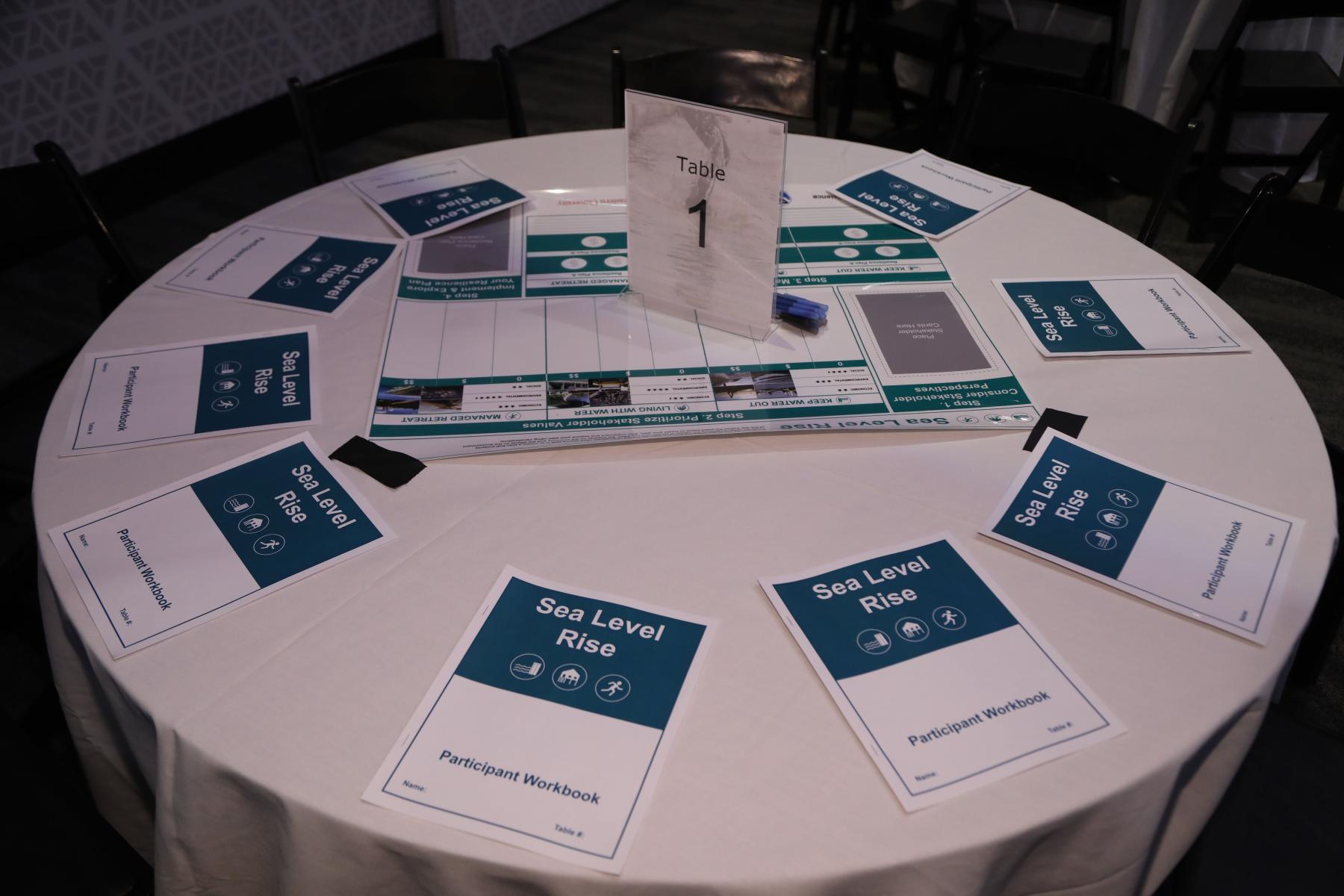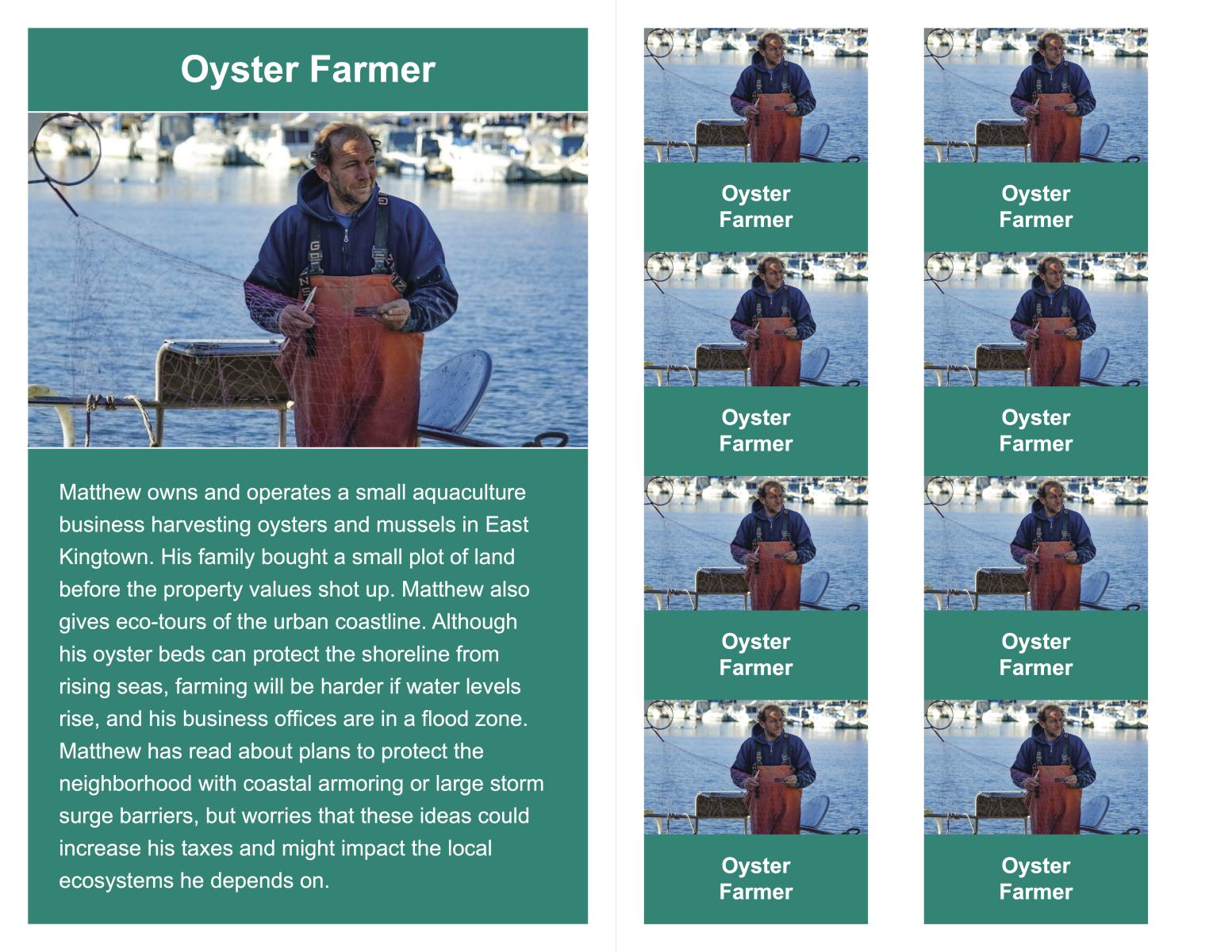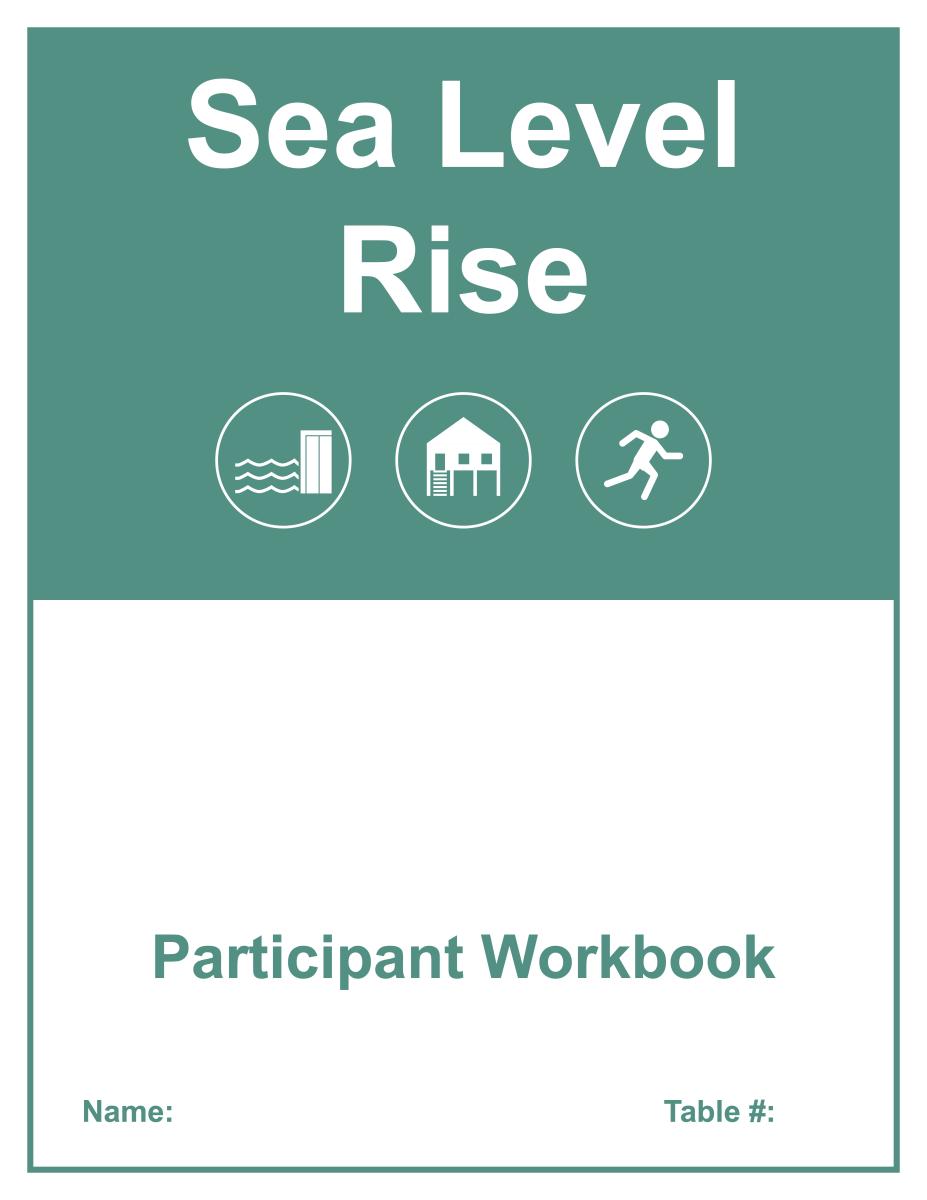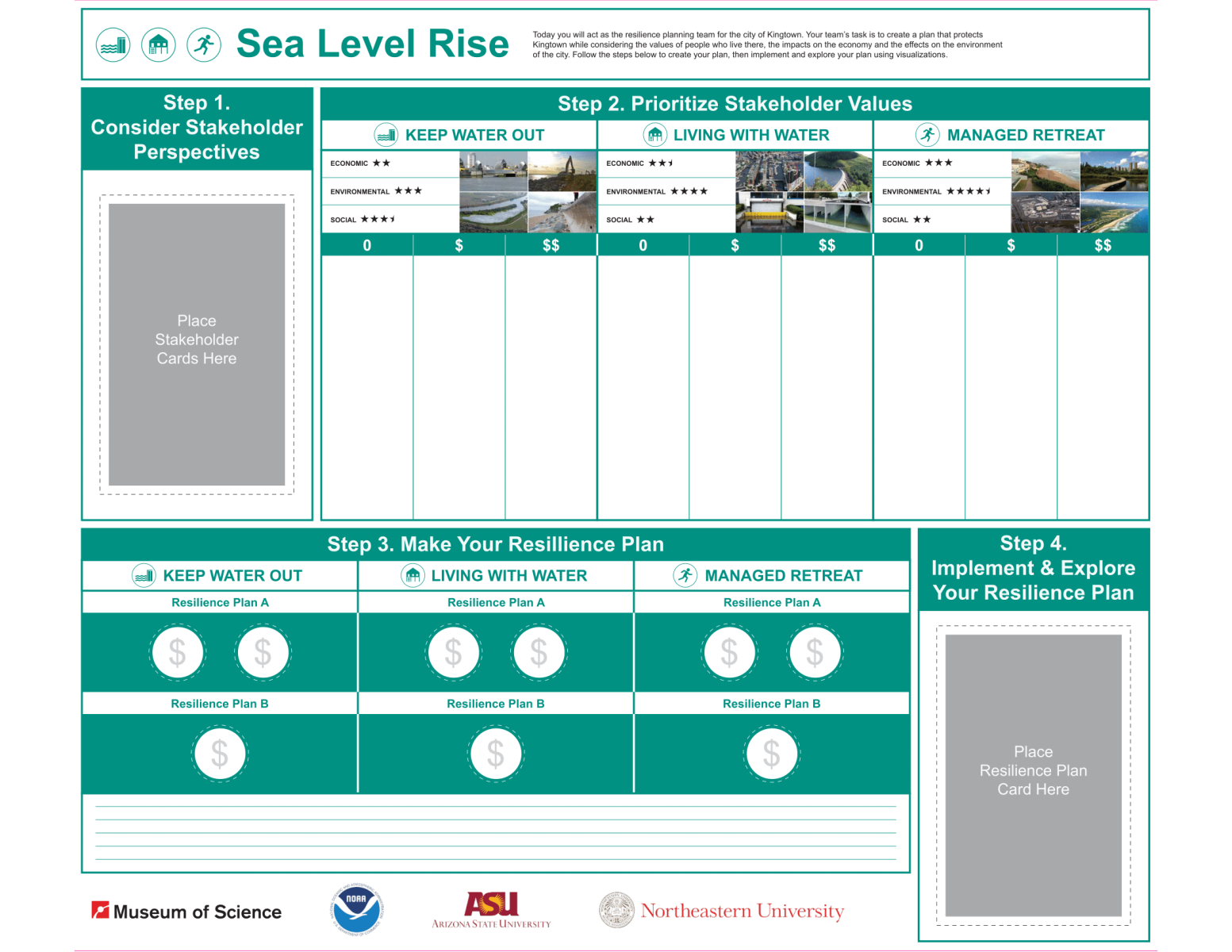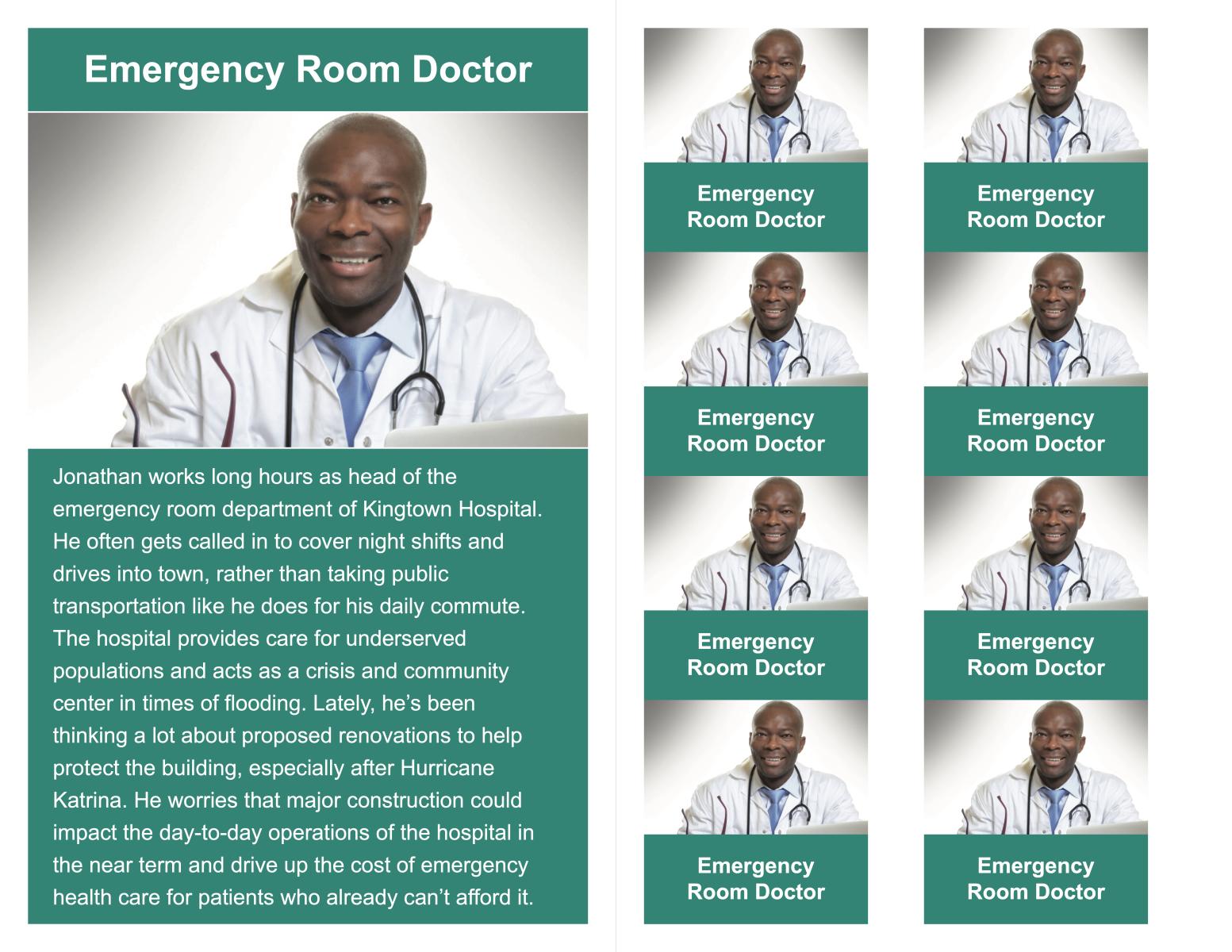DESCRIPTION
This deliberative forum brings the participants through the resilience planning process around sea level rise for a generic city, named Kingtown. Participants will use visualizations to explore potential vulnerabilities to city infrastructures, social networks, and ecosystems from sea level rise. They then learn and discuss stakeholder values, consider trade-offs of various resilience strategies, make a final recommendation for increasing their city’s community resilience, and then experience visualizations of how their plan will affect the city and the people who live there.
Learn more about the Citizen Science, Civics, and Resilient Communities (CSCRC) project.
DESCRIPTION
This deliberative forum brings the participants through the resilience planning process around sea level rise for a generic city, named Kingtown. Participants will use visualizations to explore potential vulnerabilities to city infrastructures, social networks, and ecosystems from sea level rise. They then learn and discuss stakeholder values, consider trade-offs of various resilience strategies, make a final recommendation for increasing their city’s community resilience, and then experience visualizations of how their plan will affect the city and the people who live there.
Learn more about the Citizen Science, Civics, and Resilient Communities (CSCRC) project.
TRAINING VIDEOS
OBJECTIVES
BIG IDEA
Engage participants in discussions about climate-related hazards and resilience strategies and policies in part through the exploration of NOAA data.
LEARNING GOALS
As a result of participating in this program, the public and educators will:
- Increase understanding of environmental changes, sea level rise, and the ways human and natural systems interact.
- Engage in discussions about measures that contribute to resilient communities, ecosystems, and economies and use of visualizations, case studies, and other data to make decisions during the forums.
- Increase interest in research related to sea level rise and societal issues related to environmental changes and natural hazards.
- Be more supportive of the creation of robust community resiliency measures.
DOWNLOAD FILES
- Sea Level Rise Background Information (PDF)
- Sea Level Rise Elements (PDF)
- Sea Level Rise Deliberation Slides (PPTX)
- Sea Level Rise Gameboard (PPTX)
- Sea Level Rise Workbook (PDF)
- ONLINE Sea Level Rise Facilitation Guide (DOCX
- Sea Level Rise Facilitation Guide (DOCX)
- Sea Level Rise Gameboard (PDF)
- Example Language _ Emails (DOCX)
- Table signs with ground rules (PPTX)
- Using ESRI Storymap and Links (PDF)
- Logistics _ Printing Checklists (XLSX)
Credits
Museum of Science, Arizona State University, and Northeastern University
These materials were created by the Museum of Science, Boston under the awards NA15SEC0080005 and NA18SEC0080008 from the Environmental Literacy Program of the National Oceanic and Atmospheric Administration (NOAA), U.S. Department of Commerce. The statements, findings, conclusions, and recommendations within are those of the author(s) and do not necessarily reflect the views of NOAA or the U.S. Department of Commerce.
Creative Commons Attribution Non-Commercial Share Alike 3.0 United States (CC BY-NC-SA 3.0 US).
View more details

NISE Network products are developed through an iterative collaborative process that includes scientific review, peer review, and visitor evaluation in accordance with an inclusive audiences approach. Products are designed to be easily edited and adapted for different audiences under a Creative Commons Attribution Non-Commercial Share Alike license. To learn more, visit our Development Process page.

